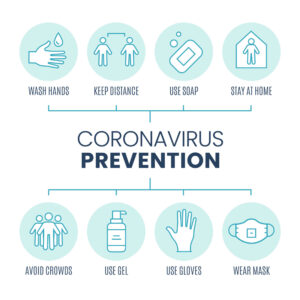Registered with the Registrar of Newspapers for India under R.N.I 53640/91
Vol. XXXI No. 5, June 16-31, 2021
Lock, unlock, repeat: Breaking the lockdown cycle
by our Special Correspondent
The covid numbers for June indicate a hopeful downtrend. Test positivity rates have dipped across the state and the number of fresh cases is seeing a decline. On June 12, for the first time in months, the number of new cases reported in Chennai dropped below 1,000. The city’s recovery rate also rose to 97 percent, slightly higher than the overall figure for the state. The credit goes to the lockdown, which slowed down transmission by curbing public interaction.
However, a lockdown is a double-edged sword. The barriers that it puts up to restrict virus transmission also impede socio-economic, educational and cultural activities. According to a Times of India report released in May, the then 15-day lockdown was estimated to cost the state around Rs. 2,900 crores. Businesses have also suffered and the most impacted as always are the vulnerable – daily wage earners, migrant workers, neighbourhood vendors and others with little to no financial net. Compounding matters is the price rise that accompanies lockdowns. Consider vegetables, a daily essential. The last week of May saw the prices shoot up in various localities across the city. In Alwarpet, a kilo of green peas was sold at Rs. 190 while in Tambaram, french beans were priced at Rs. 300 per kg and tomatoes, Rs. 70. Lockdowns are not a sustainable shield against the coronavirus in the long run.
As the administration rolls out what seems to be a gradual relaxation of the lockdown, it’s perhaps important to take note of a few lessons that recent events have taught us if we’re to break the lockdown cycle.

1. Lockdowns are not designed to beat the virus.
Lockdowns do not eradicate the virus – they only slow down transmission by culling opportunities for the virus to spread. Lockdowns are useful as a breathing period for the administration, health sector and public to equip themselves with the resources needed to actually fight the pandemic. But, as we have seen with the second wave, their short-term benefits are wasted when anti-pandemic efforts are slackened.
Hand washing, social distancing, masking and other self-monitory hygiene measures still remain our most effective weapon against the virus. Yet, there are still those who have not adopted these preventive measures even at this stage. It is perhaps worthwhile to understand the reasons why and address their issues, if any. Some countries have enforced punitive measures in order to standardize covid protocols, a tool that perhaps we can consider here, too.
At the end of the day, behavioural change that establishes ‘new normal’ routines among the public will be a key asset in helping eradicate the pandemic. Tamil Nadu Chief Minister M.K. Stalin has made it quite clear that lockdown relaxations risk being rolled back if preventive measures are not followed. That’s as it should be. Such strong messaging must be accompanied by an educational campaign on the importance of proper preventive measures, too.
2. Vaccination drive is key
The covid vaccine lowers the chances of contracting the disease and also greatly reduces the virulence of the coronavirus. Ground reports and patient anecdotes suggest that vaccines have enabled people to ride out the infection at home with relatively mild symptoms. Therefore, vaccines are a key weapon in our fight against the virus and the city’s vaccination drive is a crucial program.
The GCC is taking multiple steps to speed up vaccination rates. It is reportedly conducting a survey of residents with hypertension and diabetes in order to identify those who need the vaccine on priority; it is also offering bulk vaccination at doorstep for 45+. In Kovalam, welfare organizations are incentivising the jab by offering lucky draws with enticing gifts ranging from free biriyani and phone recharges to gold chains and washing machines. Much is being done to encourage people to avail the vaccination.
Tamil Nadu was reportedly vaccinating around 2 lakh persons a day until a shortage hit in the first week of June. The state stands to receive an additional 4.26L vaccine doses from the Centre to pick up speed.
3. Local bodies need to sustain their fight against the pandemic, with dedicated resources at hand
When the first wave hit the state, multiple measures helped keep it in check, not just lockdowns – fever camps were conducted to facilitate widespread testing; local authorities kept in touch with citizens who had tested positive; sanitization was conducted regularly, too. These grassroots efforts were slackened as the situation improved and the lockdown was withdrawn, with the public returning to life as usual. Then the election happened, crunching local resources further. The circumstances were ripe for a second wave.
Localized efforts to handle the pandemic must be sustained in order to contain spread as well as educate citizens on covid appropriate behaviour. This calls for a dedicated team and resources so that such functions can continue uninterrupted. Experts say that the virus may never really go away but will eventually become more harmless, cropping up as fresh infections in community pockets here and there. It stands to reason that the health department must be sufficiently equipped to monitor and handle it in a sustained manner in order to keep its impact as low as possible.

